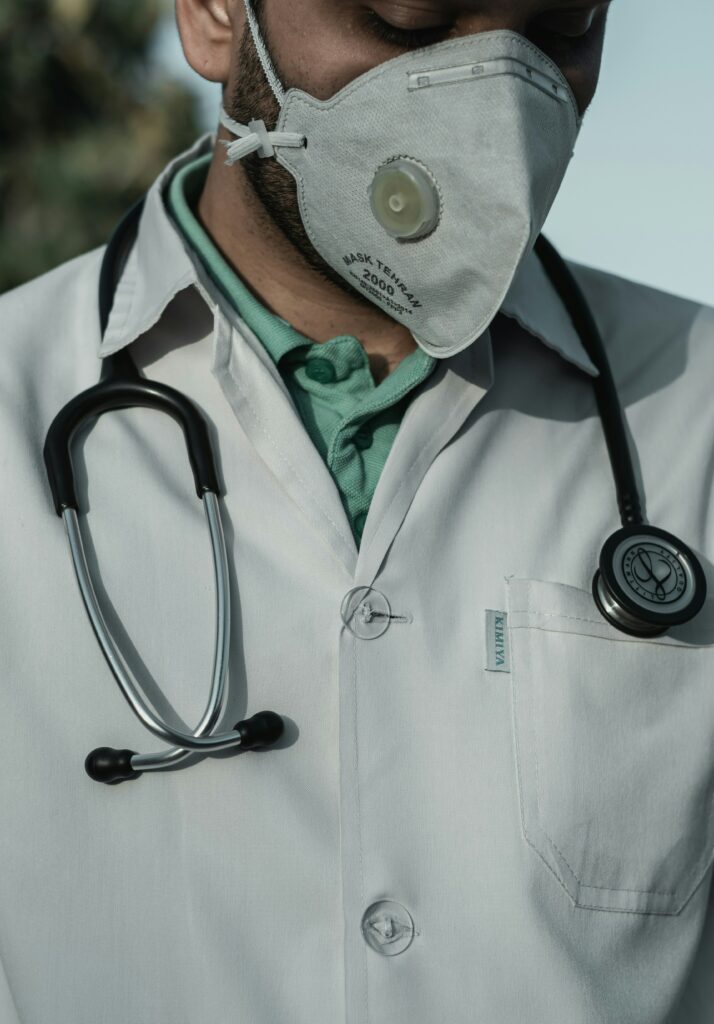Introduction
Understanding how to wash lab coats properly is essential in minimizing the spread of healthcare-associated infections (HAIs) and maintaining a sterile medical environment. Healthcare-associated infections (HAIs) pose a significant threat to patient safety, with approximately one in 31 U.S. patients acquiring at least one infection during their hospital stay. While hand hygiene is often emphasized, the cleanliness of medical attire, particularly lab coats, plays a crucial role in preventing the spread of infections. Studies have shown that bacteria, including multidrug-resistant organisms, can be harbored on provider attire such as white coats and surgical scrubs. Proper maintenance and regular cleaning of lab coats are essential steps in reducing the risk of HAIs and ensuring a safe healthcare environment.
Medical uniforms are an essential part of any scientist, researcher, or medical professional’s wardrobe. They not only protect against spills and contamination but also provide a professional appearance. However, with regular use, lab coats accumulate stains, dirt, and wear, making proper cleaning and maintenance crucial. In this guide, we’ll walk you through how to effectively remove stains, and maintain your doctor lab coat to keep it in top condition.

How to Wash Lab Coats
Checking the Care Label Before Washing
Before tossing your white lab coat into the wash, always check the care label. Different fabrics require different care routines. Some coats are made of polyester-cotton blends, while others may be fire-resistant or have special coatings. The manufacturer’s instructions will guide you on water temperature, detergents, and whether dry cleaning is required. Ignoring these guidelines can cause shrinkage, fading, or damage to protective coatings.
Choosing the Right Detergent and Water Temperature
The detergent and water temperature you use can significantly impact the longevity of your dr lab coat.
• Use a mild detergent without harsh chemicals to preserve the fabric. Harsh detergents can break down fibers over time.
• Opt for cold water when washing polyester-cotton blends. Hot water can cause shrinkage and weaken the fabric.
• For cotton lab coat, a warm wash may be suitable, but avoid excessive heat.
Machine Washing vs. Hand Washing
• Machine Washing: Place your doctor lab coat in a mesh laundry bag to prevent it from tangling with other clothes. Wash it separately from dark-colored clothing to avoid discoloration. Use a gentle cycle for minimal wear and tear.
• Hand Washing: If your coat is delicate or has embroidery, hand washing in cold water with mild soap is a great option.
Drying and Ironing Best Practices
• Air drying is the safest method to prevent shrinking and fabric damage.
• If using a dryer, choose a low-heat setting and remove the coat promptly to avoid stiffness.
• To maintain a crisp, professional look, iron on a warm setting (150°C or 300°F). Avoid high heat, especially on synthetic materials.

How to Remove Chemical Stain from a Lab Coat
Identifying the Type of Chemical Stain
Lab coats can come into contact with various chemicals, including corrosive substances, carcinogens, and solvents. Identifying the type of stain is the first step in determining how to remove chemical stain from lab coat.
Pre-Treating Stains Before Washing
For minor stains
• Ink stains: Use rubbing alcohol or hand sanitizer before washing.
• Blood stains: Cold water and hydrogen peroxide can help lift the stain before it sets.
• Grease stains: Apply dish soap directly to the stain and let it sit before washing.
For chemical spills
• If a hazardous chemical has been spilled, follow your lab’s safety guidelines before attempting to clean the lab coat.
• Neutralize acids with baking soda and rinse with cold water.
• Alkaline spills can be treated with a mild acid like diluted vinegar.
When to Dispose of a Contaminated Lab Coat
If your white lab coat has been exposed to dangerous chemicals, carcinogens, or more than 250ml of toxic substances, it should not be washed but disposed of as hazardous waste. Always follow safety guidelines and your institution’s disposal policies.
Cleaning Lab Coats with Biological Contamination
When and How to Autoclave a Lab Coat
Biological contamination requires a different approach:
• BSL-1 contamination: Autoclaving is recommended but not always necessary if there was no known exposure.
• BSL-2 contamination: Autoclaving is required before washing to eliminate any biological hazards.
• Collect contaminated medical uniforms in biohazard-labeled containers before autoclaving.
Proper Disposal of Biohazard-Contaminated Lab Coats
If a lab coat is heavily contaminated and cannot be safely washed, it must be disposed of as biohazardous waste according to lab protocols. Do not attempt to wash or reuse a heavily contaminated coat.
Handling Lab Coats with Radiation Contamination
Reporting and Disposing of Radioactive Lab Coats
If your Dr lab coat has been exposed to radioactive materials, do not attempt to wash it. Immediately notify your lab’s Environmental Health and Safety (EHS) team. Radioactively contaminated medical uniforms must be disposed of in designated radioactive waste containers to prevent contamination spread.

Best Practices for Maintaining Lab Coats
How Often Should You Wash Your Lab Coat?
• Weekly if used frequently in contaminated environments.
• Monthly if used less often.
• Immediately after significant spills or contamination.
Avoiding Common Washing Mistakes
• Never use bleach on fire-resistant or special-coated custom lab coats.
• Do not overload the washing machine, as lab coats need space for thorough cleaning.
• Avoid high heat drying, which can shrink and degrade fabric.
When to Replace Your Lab Coat
Signs Your Lab Coat is No Longer Safe to Use
• Visible wear and tear such as holes, fraying, or thinning fabric.
• Persistent chemical stains that compromise safety.
• Fading of protective coatings, reducing resistance to spills and contamination.
Choosing a New Lab Coat for Maximum Protection
When replacing a custom lab coat, consider:
• Fabric material – Cotton-polyester blends are durable, while Nomex is fire-resistant.
• Fit and comfort – Ensure it allows ease of movement.
• Safety features – Chemical-resistant coatings, reinforced stitching, and pockets for added utility.
Conclusion
Maintaining clean lab coats is more than just about appearance; it is essential for safety and hygiene. With healthcare-associated infections affecting many patients, the cleanliness of medical uniforms, including white lab coats, plays a crucial role in preventing contamination. Studies have shown that doctor lab coats can harbor bacteria and other harmful substances if not washed and maintained properly.
By following the correct washing methods, such as checking care labels, using mild detergents, and avoiding high heat, custom lab coats can last longer while remaining effective. When dealing with contamination, whether chemical, biological, or radioactive, understanding how to remove chemical stain from lab coat and following appropriate disposal procedures ensures safety. In cases where a lab coat is beyond cleaning or repair, replacing it in a timely manner is the best option to maintain protection.
Ultimately, knowing how to wash your lab coat properly not only extends its lifespan but also ensures a safer environment for both the wearer and those around them. Regular cleaning, proper handling of contamination, and timely replacement of dr lab coats all contribute to a more hygienic and professional workspace.



